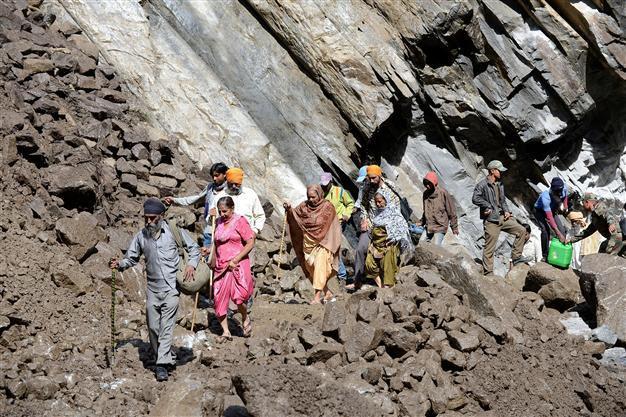Hydro-power plants partly blamed for deadly India floods: study
NEW DELHI - Agence Presse France

Hydropower projects in northern India were partly to blame for devastating floods in 2013 that killed thousands, a government report has concluded. AFP Photo
Floods and landslides caused by early monsoon rains tore through the Himalayan state of Uttarakhand last June leaving more than 5,500 people dead or missing, and destroying villages and towns.
The world's second most populous country has turned to hydropower projects in the Himalayas for electricity as it seeks to curb its reliance on coal-fed plants as well as reducing its crippling power shortages.
Pakistan, China, Bhutan and Nepal are also eyeing expansion of hydropower in the Himalayan range to varying degrees, often in ecologically fragile areas.
In a report commissioned by the Indian government, a panel of experts said some of the more than 30 hydropower projects had caused a build up of sediment in Uttarakhand's rivers, including soil dug up during construction and dumped on the banks.
When record-high rainfall hit the region, rivers burst their banks, sending tonnes of water as well as the sediment downstream, exacerbating the flooding that washed away roads, bridges and whole buildings.
"The damage was due to a combination of the quantity of flood water and the sediment loads carried by the rivers," the report obtained by AFP late Tuesday said.
"Muck (sediment) management is a crucial issue. Current practices need to be reviewed and technically sound and ecologically sustainable ways of muck management in Uttarakhand have to be proposed to protect the people and the terrain from a June 2013 type of situation," it said.
The report also said that although politicians considered the production and sale of hydropower as "essential" for revenue, employment and economic growth, the ecologically fragile region must be better protected.
It said 23 out of 24 proposed projects that it studied in the region should not be allowed to continue if they were being built close to protected or vulnerable areas.
The report, which was handed to the government and the Supreme Court this month, called for a single government department to manage conservation issues in the Himalayas.
"It is important that the matter of conservation of Himalaya be addressed with utmost sincerity by a designated department/ ministry in the central government," the report said.
It also recommended studies be conducted across the region to better understand the impact of multiple plants, the effects of deforestation, tunnelling, blasting and reservoirs on the environment.
Hydropower currently accounts for 17.4 percent of India's electricity but many more projects are currently being developed, including 92 that have been commissioned in Uttarakhand.
